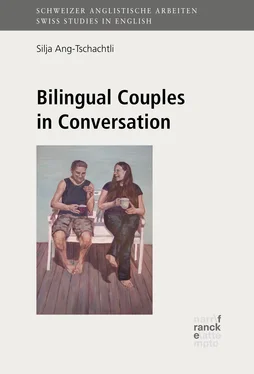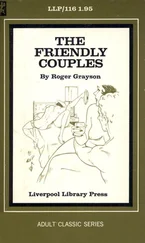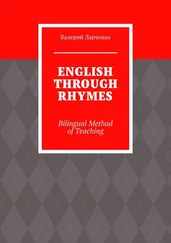The qualitative parts of the analysis revolve around the couples’ thoughts and feelings about aspects of their bilingual, bicultural relationship, whilst also taking into account their reports on their linguistic behaviour. Thus, I attempt to ascertain whether there are any parallels between the couples or between the partners, and to create a basis for comparison with the interviewees’ linguistic behaviour during the interviews. In these sections, I included a relatively large number of extracts from the interviews that I considered exemplary or particularly interesting. Wherever this was considered relevant, these extracts were also examined linguistically, for instance with regard to the speakers’ use of emphasis or voice quality. When I quoted from the interviews, I indicated the nationality and age of the speaker(s) for longer quotations (which were also set apart from the text). In order to improve the readability of the transcripts, I used subscriptsubscript for suprasegmental features (but not for elements of conversational organisation, stresses and pauses). The paragraph (i.e. turn) numbers in which the quotations appeared in the original transcript were indexed in brackets at the end of each example. However, the speakers’ turns were not numbered unless a specific turn was referred to in the analysis. If anything was omitted from the original transcripts, this was indicated with three dots in double brackets ((… )). Important parts of the transcripts were highlighted in bold print; parts that were referenced in the analysis were underlined in the extracts so as to facilitate a comparison. In order to improve the legibility of integrated quotations, I omitted all suprasegmental features except for contrastive stresses and lengthening. When referring to specific participants in the text, I indicated their mother tongue after their name in subscript ( Efor English or SGfor Swiss German) if this was not obvious from the context.
The quantitative sections of the analysis focus on aspects of the couples’ linguistic behaviour during the interviews, such as their language mixing or swearing behaviour. In all of the sections dealing with quantitative research, I also considered the potential influence of gender19gender and mother tonguemother tonguefirst language. In this context, it is important to note that the effect of these factors on the participants’ linguistic behaviour is difficult to discern clearly, not only because the sample is relatively small, but also because the distribution of combinations of gender and mother tongue is not even. While there are ten speakers of each gender and mother tongue, there are only three female English speakers to seven male English speakers; the converse is true for the Swiss participants. In order to avoid mistaking the influence of one factor for another, I therefore decided to consider the four possible combinations of gender and mother tongue in addition to the overall numbers for both genders or for both mother tongues in the analysis. The advantage of looking at the four combinations of mother tongue and gender separately is that the factor of culture or mother tongue is abstracted from the factor of gender to some degree, while it may also reveal aspects about the manner in which the two variables interact with regard to the bilinguals’ linguistic behaviour. However, there are fewer participants in each group (7 and 3, respectively), and the groups are more difficult to compare. The main advantage of considering the total number of members of both genders — or speakers of both mother tongues — is that the number of participants in both groups is larger (n=10) and that tendencies are therefore more evident. At the same time, however, there are more factors that can distort the results, particularly since the distribution of genders and mother tongues is not balanced. Consequently, I always considered all members of each group in the analysis, as well as the four combinations of gender and mother tongue, to ensure that there is no interference from the respective other variable in my findings. Since the duration, content, and key of the conversation can influence the participants’ linguistic behaviour, I compared the two couple combinations with one another (i.e. the Swiss women with the Anglophone men, and the Anglophone women with the Swiss men), as this reduces the likelihood that the particular conversation in which the bilinguals are participating works as a confounding variable. In addition, a comparison of the two couple combinations can give a better indication of the interplay between the variables of gender and mother tongue.
Concerning the quantitative analysis that was carried out, it needs to be borne in mind that this is largely an exploratory study. Due to the small sample of participants, only basic descriptive statistics were used, and no tests of significance were performed. Therefore, results ought to be interpreted as potential tendencies, and need further investigation in a larger sample to be corroborated. It should also be noted that a certain degree of clustering might have occurred, due to individual behaviour (as individuals may have a tendency to use certain features especially frequently) and conversational flow (as the use of linguistic features sometimes occurs in clusters in conversations; see Hay 2000: 727). The first type of clustering could have been relevant when the role of the variables of gender and mother tongue was examined, while the second type might have affected the results regarding similarities between the partners. Moreover, there are considerable differences in the number of words the individual participants spoke during the interviews, resulting in sub-corpora of different sizes. Therefore, the number of words or suprasegmental features which the participants used were not only given as absolute numbers in the analysis, but also as normalized frequencies where relevant, as these are a more reliable indicator for a comparison. Thus, the number of instances a particular feature occurred was set in relation to either the number of words the participants spoke during the entire interview, or to their total number of intonation unitsintonation unit. For instance, the frequency of certain expressions (such as emotion words) was normalized per 10,000 words that the interviewees said, and the occurrence of terminal pitch or voice quality (which were specified once for each intonation unit) was indicated as a percentage of the intonation units they used. In a few situations, a ratio was calculated (e.g. type-token ratio, or the ratio of laughter pulses to words).
I present the chapters in order of what I perceive to be the most general topic to the most specific one, and therefore begin with the couples’ language choice and use in chapter 5.
5 “We have a language of our own”: Language choicelanguage choicewith each other and use
5.1 Introduction
A bilingual couple’s language choice is essential to the manner in which the partners communicate with each other, since there are a multitude of conversational elements that are language-specific (for an overview, see section 3.3.3.2, “Linguistic differences and misunderstanding”). If the couples in this study spoke mainly German — rather than English — to each other, numerous aspects of their couple language might be different: their conversational style, their use of formulaic expressions, their level of directness, their manner of expressing emotions, their use of verbal humour, their prosody, and so on. Despite the strong influence of their chosen medium of communication, however, the relationship language of a bilingual couple will not be the same as that of a monolingual couple speaking only one of the languages, since, regardless of which language the bilingual partners use as their primary means of communication, features of the other language will inevitably seep into their couple language to a certain degree. The influence of the second language may be particularly evident if both partners are bilingual, but even if the partners are not fluent in each other’s mother tongues, they may adopt features from their partner’s language after these have been transferred, often unwittingly, into the couple language.
Читать дальше












